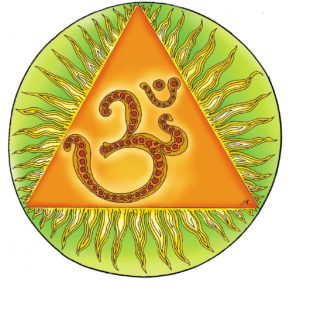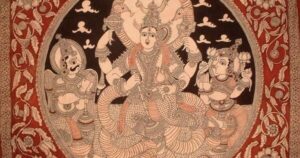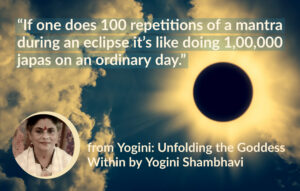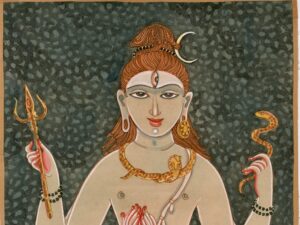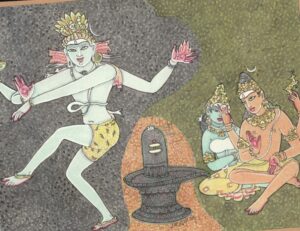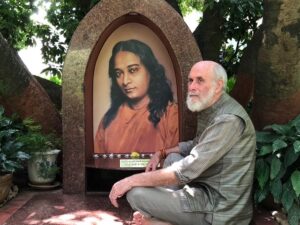Ayurveda provides a special language for understanding the primal forces of Nature and shows us how to work with them on all levels. According to Yoga and Ayurveda, Nature consists of three primal qualities, which are the main powers of Cosmic Intelligence that determine our spiritual growth. These are called gunas in Sanskrit, meaning “what binds” because wrongly understood they keep us in bondage to the external world.
1) Sattva – intelligence, imparts balance
2) Rajas – energy, causes imbalance
3) Tamas – substance, creates inertia
The three gunas are the most subtle qualities of Nature that underlie matter, life and mind. They are the energies through which not only the surface mind, but our deeper consciousness functions. They are the powers of the soul which hold the karmas and desires that propel us from birth to birth. The gunas adhere in Nature herself as her core potentials for diversification.
All objects in the universe consist of various combinations of the three gunas. Cosmic evolution consists of their mutual interaction and transformation. The three gunas are one of the prime themes of Ayurvedic thought. They form a deeper level than the three biological humors and help us understand our mental and spiritual nature and how it functions.
Sattva
Sattva is the quality of intelligence, virtue and goodness and creates harmony, balance and stability. It is light (not heavy) and luminous in nature. It possesses an inward and upward motion and brings about the awakening of the soul. Sattva provides happiness and contentment of a lasting nature. It is the principle of clarity, wideness and peace, the force of love that unites all things together.
Rajas
Rajas is the quality of change, activity, and turbulence. It introduces a disequilibrium that upsets an existing balance. Rajas is motivated in its action, ever seeking a goal or an end that gives it power. It possesses outward motion and causes self seeking action that leads to fragmentation and disintegration. While in the short term Rajas is stimulating and provides pleasure, owing to its unbalanced nature it quickly results in pain and suffering. It is the force of passion that causes distress and conflict.
Tamas
Tamas is the quality of dullness, darkness, and inertia and is heavy, veiling or obstructing in its action. It functions as the force of gravity that retards things and holds them in specific limited forms. It possesses a downward motion that causes decay and disintegration. Tamas brings about ignorance and delusion in the mind and promotes insensitivity, sleep and loss of awareness. It is the principle of materiality or unconsciousness that causes consciousness to become veiled.
Sattva and the Mind
The mind, or consciousness in general, is naturally the domain of Sattva. Consciousness itself is called Sattva in Sanskrit. Unless the mind is calm and clear we cannot perceive anything properly. Sattva creates clarity, through which we perceive the truth of things, and gives light, concentration and devotion. Rajas and Tamas are factors of mental disharmony causing agitation and delusion. They result in wrong imagination and misperception.
From Rajas comes the false idea of the external world as real in itself, which causes us to seek happiness outside ourselves and lose track of our inner peace. Rajas creates desire, distortion, turbulence and emotional upset. It predominates in the sensory aspect of the mind because the senses are ever-moving and seeking various objects. As long as we remain immersed in the pursuit of sensory enjoyment we fall under the instability of Rajas.
From Tamas comes the ignorance that veils our true nature and weakens our power of perception. Through it arises the idea of an ego or separate self by which we feel ourselves alone and isolated. Tamas prevails in consciousness identified with the physical body, which is dull and limited. As long our identity and sense of well-being is primarily physical we remain in the dark realm of Tamas.
Sattva is the balance of Rajas and Tamas, combining the energy of Rajas with the stability of Tamas. By increasing Sattva one gains peace and harmony, and returns to Primordial Nature and Pure Spirit in which is liberation. However attachment to Sattva, such as clinging to virtue, can bind the mind. For this reason we must strive to develop pure Sattva, which is its detached form, or Sattva not clinging to its own qualities. Pure Sattva does not condemn Rajas and Tamas but understands their place in the cosmic harmony, which is as outer factors of life and body whose proper place is apart from our true nature.
When pure Sattva prevails in our consciousness we transcend time and space and discover our eternal Self. The soul regains its basic purity and unites with God. When out of balance, the three gunas bring about the process of cosmic evolution through which the soul evolves through the kingdoms of Nature, experiencing birth and death, happiness and sorrow in various bodies. The movement of the three gunas is coterminous with creation.
Sattva as the state of balance is responsible for all true health and healing. Health is maintained by Sattvic living, which is living in harmony with Nature and our inner Self, cultivating purity, clarity and peace. Rajas and Tamas are the factors that cause disease. Rajas causes pain, agitation and the dissipation of energy. Tamas brings about stagnation, decay and death. Rajas and Tamas usually work together. Rajas brings about the over expression of energy, which eventually leads exhaustion, in which Tamas prevails. For example, too much spicy food, alcohol, and sexual indulgence, are initially Rajasic or stimulating. These eventually lead to such Tamasic conditions as fatigue and collapse of energy. On a psychological level too much Rajas, which is turbulent emotion, leads to Tamas or mental dullness and depression.
Mental Types According to the Gunas
To have Sattva predominant in our nature is the key to health, creativity and spirituality. Sattvic people possess an harmonious and adaptable nature which gives the greatest freedom from disease both physical and mental. They strive toward balance and have peace of mind that cuts off the psychological root of disease. They are considerate of others and take care of themselves. They see all life as a learning experience and look for the good in all things, even in disease which they strive to understand, not merely to suppress.
Rajasic people have good energy but burn themselves out through excessive activity. Their minds are usually agitated and seldom at peace. They have strong opinions seek power over others often regardless of the means. They are impatient and inconsistent in dealing with their problems and do not wish to take the time or responsibility to get well. They blame others for their problems, including their therapists.
Rajasic people can accomplish their goals and are generally in control of their lives. However, they are not awake to their spiritual purpose, and are dominated by the ego in their pursuit of happiness. Life brings them shocks, which can cause them great suffering, particularly when they lose control. Even when they achieve their goals they find that they are still not happy.
Tamasic types have deep-seated psychological blockages. Their energy and emotion tends to be stagnant and repressed and they do not know what their problems really are. They do not seek proper treatment and usually have poor hygiene or poor self-care habits. They accept their condition as fate and do not take advantage of the methods that may alleviate their problems. They allow other people and negative influences to dominate them and do not like to be responsible for their lives. They prefer not to deal with their problems or will not let others know about them, which only allows the problems to get worse.
Mental Constitution According to the Three Gunas
The gunas show our mental and spiritual state through which we can measure our propensity for psychological problems. The following test is good index of these qualities and how they work within our life and character.
The answers on the left indicate Sattva, in the middle Rajas, and on the right Tamas. Please fill out this form carefully and honestly. After answering the questionnaire for yourself, you should have someone who knows you well, like your husband, wife or close friend, fill it out for you also. Note the difference between how you view yourself and how others see you.
For most of us our answers will generally fall in the middle or Rajasic area, which is the main spiritual state in our active and outgoing culture today. We will have various psychological problems but can usually deal with them. A Sattvic nature shows a spiritual disposition with few psychological issues. A highly Sattvic nature is rare at any time and shows a saint or a sage. A Tamasic person has a danger of severe psychological problems but would be unlikely to fill out such a chart. The areas in ourselves that we can improve from Tamas to Rajas or from Rajas to Sattva will aid in our peace of mind and spiritual growth. We should do all we can to make such changes.
MENTAL CONSTITUTION CHART
DIET: Vegetarian___________Some meat______________Heavy meat diet__________
DRUGS, ALCOHOL, STIMULANTS: Never____Occasionally______Frequently____
SENSORY IMPRESSIONS: Calm, pure______Mixed________Disturbed__________
NEED FOR SLEEP: Little__________Moderate__________High________________
SEXUAL ACTIVITY: Low_________Moderate____________High________________
CONTROL OF SENSES: Good______Moderate___________Weak_______________
SPEECH: Calm and peaceful________Agitated___________Dull________________
CLEANLINESS: High_____________Moderate___________Low_______________
WORK: Selfless_______________For personal goals_______Lazy_______________
ANGER: Rarely_______________Sometimes___________Frequently_____________
FEAR: Rarely________________Sometimes___________Frequently_____________
DESIRE: Little________________Frequent_____________Excessive______________
PRIDE: Modest_______________Some Ego____________Vain_________________
DEPRESSION: Never___________Sometimes___________Frequently_____________
LOVE: Universal_______________Personal___________Lacking in love_________
VIOLENT BEHAVIOR: Never______Sometimes__________Frequently_____________
ATTACHMENT TO MONEY: Little______Some___________A lot_______________
CONTENTMENT: Usually____________Partly___________Never______________
FORGIVENESS: Easily__________With effort__________Holds grudges___________
CONCENTRATION: Good_______Moderate_____________Poor________________
MEMORY: Good_______________ Moderate____________Poor_________________
WILL POWER: Strong___________Variable_____________Weak________________
TRUTHFULNESS: Always________Most of the Time_______Rarely_______________
HONESTY: Always____________Most of the Time_______Rarely_______________
PEACE OF MIND: Generally______Partly______________Rarely_______________
CREATIVITY: High_____________Moderate____________Low________________
SPIRITUAL STUDY: Daily________Occasionally_________Never______________
MANTRA, PRAYER: Daily________Occasionally_________Never______________
MEDITATION: Daily_____________Occasionally________Never______________
SERVICE: Much_______________Some______________None________________
Total: Sattva________________Rajas_____________Tamas________________
The Three Gunas and Therapy
Many different types of medical and healing therapies exist for the mind. To benefit from them properly and to avoid their possible side-effects, we must understand their approach and when they are useful. Here Ayurveda helps us greatly by showing how healing therapies relate to these three gunas. This provides us a deep understanding of the healing process and its likely results. Sattvic therapies work through Sattvic qualities of love, peace and nonviolence. Rajasic therapies work through Rajasic qualities of stimulation, energization and agitation. Tamasic therapies work through Tamasic qualities of sedation, sleep and grounding. Ayurvedic therapies are primarily Sattvic and employ Rajasic and Tamasic modalities only under special circumstances.
Sattvic healing uses Nature, the life force and the power of the cosmic mind through such treatment methods as herbs, vegetarian diet, mantra and meditation. Rajas can occassionally be useful in the healing process. Rajas helps break up Tamas, while Sattva, being a condition of harmony, does not always have the ability to do so. It is often necessary to move from Tamas to Rajas in order to return to Sattva, like needing to stimulate or shock a person into awakening to their repressed pain. Tamas is seldom useful in the healing process except when required to sedate too high Rajas. For example, a person in hysteria, an excess Rajas condition, may require a strong sedative herb or drug, a Tamasic therapy. In this case Sattva would be too mild to calm Rajas.
Ayurvedic psychology aims at moving the mind from Tamas to Rajas and eventually to Sattva. This means moving from an ignorant and physically oriented life (Tamas), to one of vitality and self-expression (Rajas), and finally to one of peace and enlightenment (Sattva).
Three Stages of Mental Healing
- Breaking up Tamas, developing Rajas Moving from mental inertia to self-motivated action.
- Calming Rajas, developing Sattva Moving from self-motivated action to selfless service.
- Perfecting Sattva Moving from selfless service to meditation.
Naturally it is important to know what stage is appropriate for a person. A person in a Tamasic condition requires outer activity to break up their inertia; he or she cannot simply be asked to sit quietly and meditate. At such times Rajasic (active) methods are necessary and Sattvic (passive) methods may not be sufficient. The person requires communication and working with other people. A person in a Rajasic condition, however, requires a reduction of activity and interiorization of consciousness (development of Sattva). Yet this must be done gradually because Rajas does not subside all at once. The person must be introduced into meditation through practical therapies of yogic postures, mantras or visualizations. A person in a Sattvic condition requires spiritual practices and not ordinary psychological treatment, and can easily move into meditation without much external support.
However, these three stages are not simply different levels. We all have Tamasic, Rajasic and Sattvic factors in our minds. We all need each of these three processes to some degree. There are times when our minds are Tamasic, like right after waking up in the morning or when daydreaming in the afternoon. Whenever we are mentally dull or emotionally depressed Tamas is predominant. Rajas prevails when we are agitated, disturbed, active or outgoing, like when we are very busy working with a number of people or projects. Sattva prevails when we are quiet, peaceful and content, or naturally fall into meditation.
Similarly we should not judge other people by how they appear when dominated by one quality only. Even a spiritually advanced person has Tamasic moments or periods when he or she may do something regrettable. In the same way spiritually undeveloped persons have Sattvic moments when they may do something inspired, noble or kind. When looking at ourselves we should try to see all three factors in our nature and behavior and try to develop our Sattvic side.
Stage 1: Breaking Up Tamas/ Moving from Tamas to Rajas – Personal Healing
For this transition fire is necessary. We must wake up, act and begin to change. Deep seated patterns of attachment, stagnation and depression must be released. We must recognize our suffering and learn from it, confronting our pain, including what we have suppressed or ignored for years. A new sense of who we are and what we need to do is required. Action (Rajas) is indicated, not only in the mind but involving outer aspects of our lives. We must break with the past, bring new energies into our lives, perhaps change jobs or modify our relationships, or move to a new locale.
Stage 2: Calming Rajas/ Moving from Rajas to Sattva – Healing of Humanity
For this transition space is necessary. We must surrender our pain and give up our personal seeking, letting go of individual hurts and sorrows. Egoistic drives and motivations must be surrendered for the greater good. We must depersonalize our problems and look to understand the entire human condition and the pain of others. Leaving behind our personal problems we must take up the problems of humanity, opening up to the suffering of others as our own. We must learn that life creates suffering in order to help us to grow spiritually. This is a stage of service and charity.
Stage 3: Developing Pure Sattva – Universal Peace
To bring about this transition we must develop love and awareness as universal forces. We must learn to transcend the limitations of the human condition to our higher spiritual nature. Inner peace must become our dominant force. We should no longer seek to overcome our pain but to develop our joy. We should no longer be centered in our personal or collective problems but in developing communion with the greater universe and the Divine powers at work within it. At this stage we move from the human aspect of our condition to the universal aspect, becoming open to all life. This is the stage of spiritual practice. It is beyond all ordinary healing and works to heal our relationship with God or the inner Self.
Dr. David Frawley

